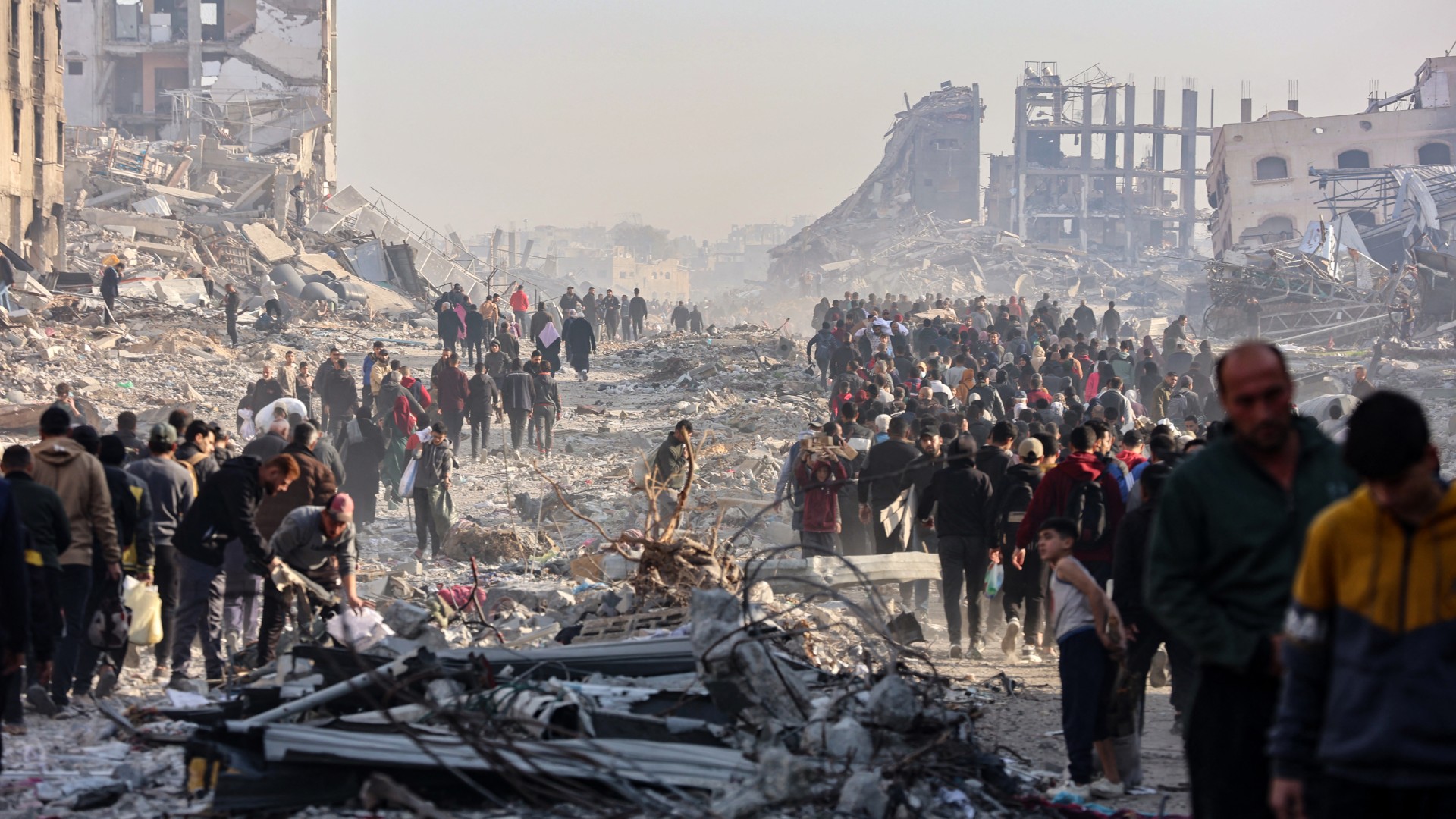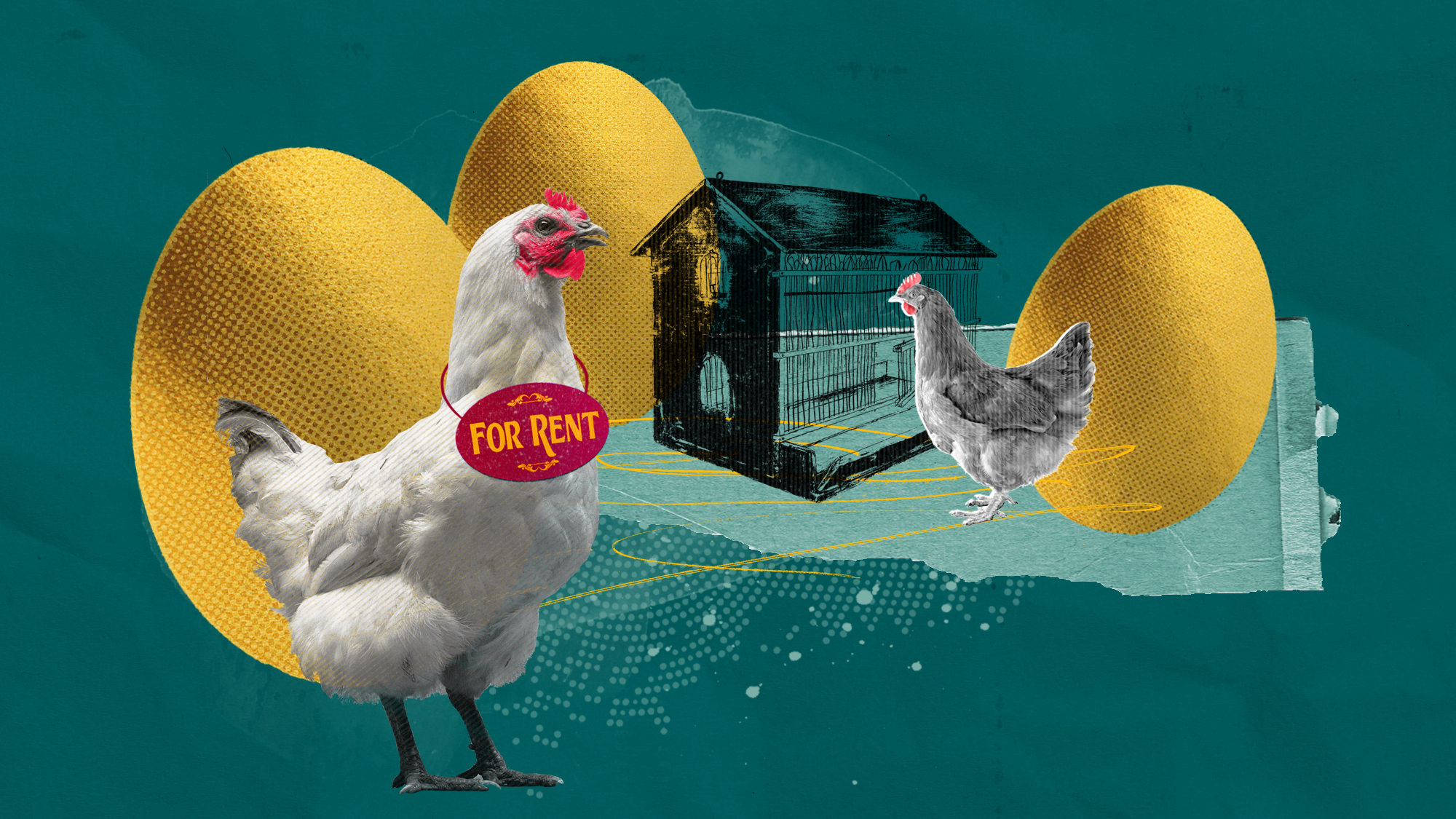The long road ahead to rebuild life in Gaza
As the Israel-Hamas ceasefire takes effect, Palestinians must deal with destroyed homes, decimated infrastructure and acute food poverty

The long-awaited ceasefire between Israel and Hamas sparked jubilant scenes in Gaza on Sunday, but joy has quickly turned to dismay as the true extent of the devastation becomes clear.
More than a year of Israeli bombardment and ground operations have reduced much of the territory to "a rubble-strewn wasteland, with blackened shells of buildings and mounds of debris stretching in all directions", said Euronews.
Alongside the more than 46,600 Palestinians the Hamas-run health ministry claims have been killed in the war, the UN estimates 69% of buildings in Gaza have been damaged or destroyed, including more than 90% of homes.
The Week
Escape your echo chamber. Get the facts behind the news, plus analysis from multiple perspectives.

Sign up for The Week's Free Newsletters
From our morning news briefing to a weekly Good News Newsletter, get the best of The Week delivered directly to your inbox.
From our morning news briefing to a weekly Good News Newsletter, get the best of The Week delivered directly to your inbox.
With the majority of the 2.2 million population currently displaced, and large parts of the enclave "uninhabitable", the BBC said it could take "years or even decades for the territory to recover".
What dangers do those returning face?
Of primary concern is Gaza's healthcare system, which a House of Lords Library report said is in "crisis". Deliberately targeted by Israeli forces, who claimed healthcare facilities have been used for military purposes by Hamas, most hospitals and clinics are "damaged beyond use, and those remaining open face shortages of water, fuel and medical supplies".
The UN Environment Programme has described water, sanitation and hygiene systems as "almost entirely defunct", while an acute food shortage has left Gaza’s 1.9 million displaced people at risk of malnutrition and starvation.
Israel's bombardment of Gaza has also "unleashed yet another deadly, but silent enemy on the people there – asbestos", said Al Jazeera. "Present throughout much of Gaza's structures", the destruction has caused vast amounts to be broken into tiny airborne particles that could potentially lead to a spike in cancer cases "for decades".
A free daily email with the biggest news stories of the day – and the best features from TheWeek.com
What about the economy?
The conflict has also had a "devastating impact" on Gaza's economy, said the BBC. The World Bank estimates almost 100% of the population are now living in poverty, while the cost of basic supplies has risen by almost 250% on average since the start of the war.
"Major roads have been ploughed up and critical water and electricity infrastructure lies in ruins," said Euronews, affecting not just everyday life but the prospect of economic recovery.
By September 2024, more than two-thirds of agricultural land in of Gaza had been damaged or destroyed, according to an analysis by the UN's Food and Agriculture Organization. In North Gaza, the epicentre of Israel's military operations in the strip, that figure rose to 78%.
The ceasefire agreement dodges crucial questions of who will govern Gaza going forward or whether Israel and Egypt will lift a blockade limiting the movement of people and goods that they imposed when Hamas seized power in 2007.
If the blockade remains in force, the UN estimates it could take 350 years for Gaza's economy to return to pre-war levels.
What are the long-term challenges?
With Gaza's housing and critical infrastructure in "ruins" it is "unclear when – or even if – much will be rebuilt", said the Los Angeles Times.
Removing the estimated 50 million tonnes of rubble alone is expected to take years, made even more complicated by the fact that much of the debris contains unexploded munitions as well as human remains.
The key task of rebuilding homes will require "billions of dollars and the ability to bring construction materials and heavy equipment into the territory – neither of which are assured". And meanwhile, "major questions about Gaza's future, political and otherwise, remain unresolved", said Euronews.
Elliott Goat is a freelance writer at The Week Digital. A winner of The Independent's Wyn Harness Award, he has been a journalist for over a decade with a focus on human rights, disinformation and elections. He is co-founder and director of Brussels-based investigative NGO Unhack Democracy, which works to support electoral integrity across Europe. A Winston Churchill Memorial Trust Fellow focusing on unions and the Future of Work, Elliott is a founding member of the RSA's Good Work Guild and a contributor to the International State Crime Initiative, an interdisciplinary forum for research, reportage and training on state violence and corruption.
-
 Why are beef prices rising? And how is politics involved?
Why are beef prices rising? And how is politics involved?Today's Big Question Drought, tariffs and consumer demand all play a role
-
 How is Chili's saving casual dining? Could others follow?
How is Chili's saving casual dining? Could others follow?Today's Big Question Value and TikTok virality bring in the diners
-
 Is Amazon about to take over the grocery business?
Is Amazon about to take over the grocery business?Today's Big Question Expanded delivery will present a challenge to Walmart and Kroger
-
 How potatoes became an 'unusual bellwether' in Russia's economy
How potatoes became an 'unusual bellwether' in Russia's economyUnder The Radar Spud shortages are pointing to a wider crisis in the nation's finances
-
 Frozen pizza sales could be a key indicator of a recession
Frozen pizza sales could be a key indicator of a recessionThe Explainer Sales of the item have been increasing since the pandemic
-
 Grocery stores under fire for overcharging during cost-of-living crisis
Grocery stores under fire for overcharging during cost-of-living crisisThe Explainer A recent investigation has put the spotlight on Kroger, but it is not the only chain being pinpointed
-
 Eggs too pricey? Rent a chicken.
Eggs too pricey? Rent a chicken.Under the Radar The cost of eggs increased more than 15% in January
-
 The rise and fall of Tupperware
The rise and fall of TupperwareUnder The Radar The byword for food storage has filed for bankruptcy – was it a victim of its own success?

